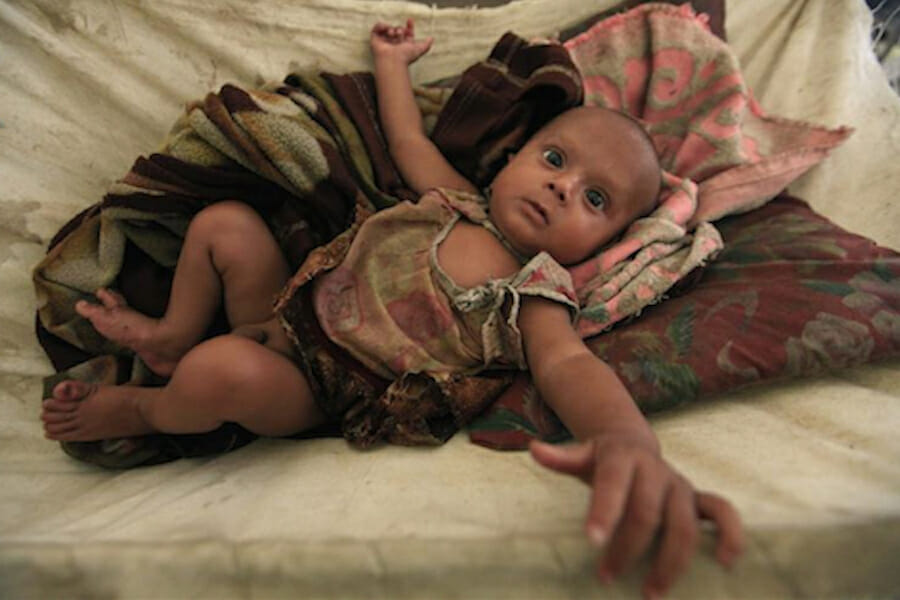
Myanmar’s Two-Child Policy
Recent comments by Myanmar’s Immigration and Population Minister, supporting Myanmar’s two-child policy have been controversial. The regulation, adopted in 2005, targets Rohingya Muslims in the country’s northwestern Rakhine State, subjecting them to punitive measures should they fail to comply with the recently reaffirmed two-child limit. Alongside mounting international concern over the ongoing persecution of the Rohingya Muslims, some have called for the abolishment of the two-child policy, declaring it incongruous with international human rights. Although Myanmar has no national laws limiting reproduction, it’s ethnic state governments can introduce regulations in accordance with national security demands.
Exacerbating this is Myanmar’s penal code, which prohibits women from having abortions except when their life is threatened. These obstacles acutely affect Rohingya women, who often are forced to furtively resort to unsafe and self-induced abortions to avoid suffering fines or imprisonment, jeopardizing their physical and mental health.
This isn’t the first-time that policies pertaining to involuntary population management have been attempted. Famously, China’s ‘one child policy’ introduced in 1978 restricted urban couples from having more than one child. And despite varied implementation, it can be argued that China’s family planning policy has helped to alleviate the social, environmental and economic stress that over-population can induce.
Past estimates measure the Rakhine State’s Rohingya population at 800,000. However in recent years that population has been fast growing. Immigration and Population Minister Khin Yi declares the figure to be 1.08 million, according to a recent Reuters interview. Exact figures are difficult to come by, but Khin Yi’s figures indicate a 26 percent increase in the Rohingya population alone – significant when compared with the countries overall population growth rate that hovers around 0.8 percent.
Khin Yi, the most senior Myanmar official to defend the policy, sees the regulation as beneficial to Rohingya women. “The Bengali women living in the Rakhine State have a lot of children. In some areas, one family has 10 or 12 children,” the Minister is quoted as saying, referring to a term that connotes their status as illegal immigrants from Myanmar’s northern neighbor, Bangladesh. “It’s not good for child nutrition. It’s not very easy for schooling. It is not very easy to take care of the children.
If Khin Yi figures are accurate then that would mean that Myanmar’s Rohingya are populating at a rate over 6 times the 2011 national average, which may, in turn, be a cause for economic and social concern in years to come. Poverty and lack of education exacerbates the plight of the Rohingya who are subject to a lack of access to services and trivial apartheid-like restrictions. And although Rohingya linkages in Rakhine state date back centuries, the 1982 Citizenship Act ominously excluded Rohingya from Myanmar’s 135 recognized ethnic groups – effectively rendering them stateless.
Recently a report by the Rakhine Investigation Commission supported family-planning education, in lieu of non-voluntary population management measures, asking that the Government refrain from implementing measures “which may be seen as discriminatory or that would be inconsistent with human rights standards.”
Myanmar’s president, Thein Sein, who warned that reactionary and extremist behavior risks endangering the reform process, echoed this sentiment. Even presidential hopeful and NLD leader, Aung San Suu Kyi, who has been criticized for her silence on the Rohingya issue, has denounced the two-child policy, calling it “against human rights” despite significant internal pushback.
It would be hard to argue against the fact that the Rohingya – the center of the past year’s inter-communal violence – faces numerous challenges. Indeed, the UN notes that as many as 140,000 people remain displaced as a result of protracted inter-communal violence in Rakhine. But for many wary of the rapidly growing Rohingya population and its looming effect on ethnic dynamics, upholding the two-child policy is seen as a means to peace and stability, regardless of its immediate costs.
If the government is serious about reforming Myanmar – as it seems to be – addressing Rakhine’s inter-communal unrest is imperative. However, simply repealing the two-child policy would do little in the face of much larger challenges. Yet, the policy does raise an important question: how can governments best manage population growth especially in the face of foreseeable economic, social and environmental stress, while still protecting fundamental principles?
Obviously, a key step for Myanmar’s government would be to extend basic essential human rights to all its citizens, including the Rohingya, providing them with equitable access to education, healthcare, and basic services. Yet encompassing Myanmar’s one hundred thirty-somewhat ethnic groups and their wide-ranging ideologies, poses a significant challenge to a fractious government, which aims to appear progressive. While Myanmar has indeed made tremendous strides in terms of democratization and has shown significant potential for economic growth, the countries fragile gains risk unraveling in light of the on-going conflict in the Rakhine State.
